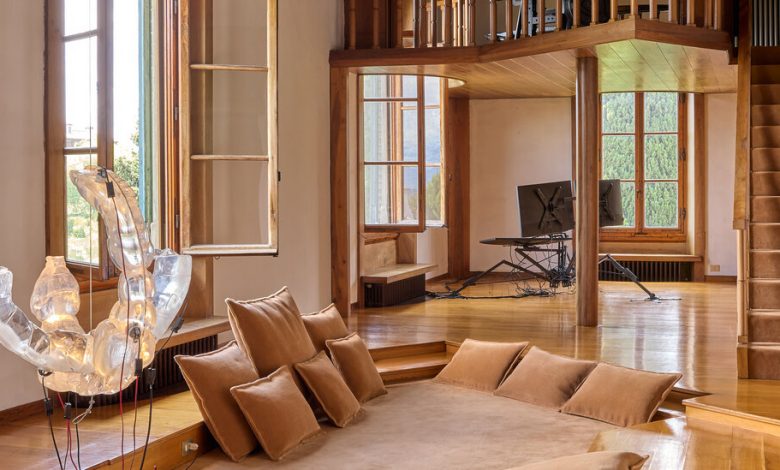A Filmmaker Needed a Quiet Place to Write. Where Better Than a Tuscan Villa?

TWO YEARS AGO, the Spanish filmmaker Albert Moya came to Florence to visit an artist friend who’d unwittingly become the caretaker of a large family estate, left empty after a famous Italian writer died, on the outskirts of town. Moya was staying nearby, at the tumbledown hotel Torre di Bellosguardo, when he learned that another unlikely (and quite strange) residence had become available. It was in the area — the southwestern Florentine hills, quiet and almost suburban, where families have long purchased properties with views of the Duomo — so Moya decided to stop by. “Anyone who lives here looks at the market all the time,” he says over espresso one frosty December morning. “There’s nothing [available], really. So when something comes up, it’s kind of pornographic.”
The director, 34, was raised in a village of 800 people outside of Barcelona, but has spent most of his adulthood in New York and Paris, where he creates videos for luxury brands like Loewe and Louis Vuitton. He entered the fashion world accidentally: The Belgian designer Dries Van Noten was the first to hire him, after seeing his 2012 short, “American Autumn,” about a group of New York City schoolchildren hosting a Surrealist dinner party. Moya had come to Italy in part to work on the script for his debut feature — “about three brothers and their daddy issues, basically” — based on an idea he discussed with the Athens-based screenwriter Efthimis Filippou, best known for collaborating with the Greek director Yorgos Lanthimos on films like “The Lobster” (2015).
Moya initially planned to find a more permanent home in Paris after his working holiday. Instead, after visiting the 2,475-square-foot apartment, he decided to stay in Florence so he could write in solitude. When he toured the rental, “it was full of crap but empty of people,” he says, noting that the last occupant, who bought the place in the 1970s and still owns it, was an Italian soccer player who “had this amazing taste and awareness of space and architecture.” Situated on the sunny second floor, it was one of four flats parceled out in the 1950s from a 14th-century Tuscan estate, Villa di Marignolle, that once belonged to the Medicis. The astronomer Galileo Galilei stayed here several times in the 17th century, until the family of artistic patrons eventually sold it off. Perhaps to counterbalance the house’s intact Renaissance-era frescoes, oak window frames and doors and large garden crowded with cypress trees, the owner had decorated most of the rooms with various types of shiny but handsome wood paneling for the floors, the arches that divide them and the railings of two lofted interior balconies. Those levels are reached via their own staircases at either end of the cavernous, 50-by-16-foot living area, from which the sole bedroom and small kitchen and bathroom branch out. “I like empty spaces and complete austerity because I travel for work. When I’m home, I want calm,” Moya says. “But here, the question was, ‘How do we respect the woodwork?’”

A 2022 installation by Moya and the designer Guillermo Santomà.CreditCredit…Albert Moya




